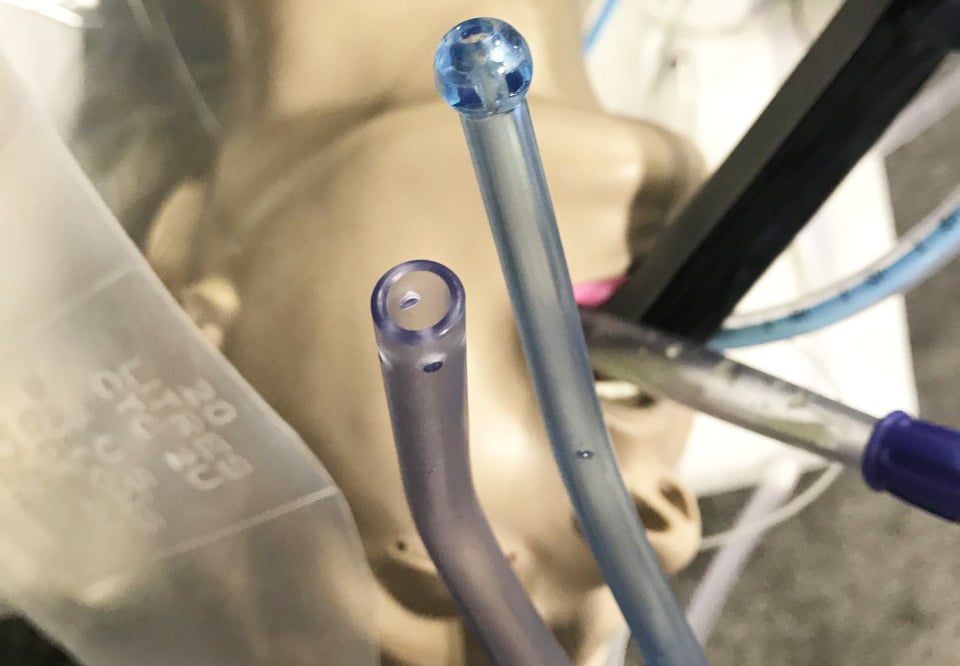
You’ve ordered portable suction machines for your ambulance fleet —a valuable piece of equipment that will, ideally, last and help save lives for years to come. On its own, however, the device can only go so far to assist with airway management. A range of accessories and equipment are required to carry out effective procedures before and after suctioning.
So, along with a suction device, just what should EMS crews be packing for airway management?
What to pack
- Endotracheal tubes (ETTs): The flexible tubing used in the frequently life-saving, but potentially risky, process of intubation. Have different sizes on hand — larger gauged tubes for adults and smaller gauged, which provide less pressure, for children. Once in place the, the Endotracheal Tube will require suctioning, so flexible tracheal suction catheters are also important to have on the ambulance. as well as traditional airway.
- Trachael Suction Catheters: Flexible tracheal suction catheters are essential to suction the endotracheal tube once it is in place. It is common practice to suction the endotracheal before delivering the first breath to remove as much airway contaminant as possible before the force of the delivered breath can push it further into the bronchial tree. Again, have different sizes available.
- Laryngoscopes: These devices, as the name suggests, allow responders to view the larynx. As such, they are a valuable diagnostic tool to review the condition of a patient’s airway before suctioning and essential for placing the endotracheal tube.
- Laryngoscope blades: These metal attachments, often disposable, assist with the examination of the larynx and in placing an ETT. Blades predominately come in two types — straight or curved. In broad terms, straight blades are better at improving visualization of the larynx, while curved blades make intubation easier. Have blades of each variety stocked in your vehicle.
- Airway adjuncts: These relatively small, curved devices help keep a patient’s airway open by stopping the tongue from blocking the airway, which frequently occurs if a patient is losing consciousness or unconscious.
- Supraglottic airways: Less invasive than ETTs and useful for difficult airways, these devices keep the upper airway open to provide unobstructed ventilation. They were once used primarily in surgical settings but are now regularly used by first responders.
- Batteries: This is two-fold. For any rechargeable equipment you have – of which, SCCOR has plenty — be sure it is fully charged before each shift. It is also important to have a supply of spare disposable batteries on hand for equipment that requires them, such as the SSCOR D Cell Suction.
Inventory and inspection
Not only is it important to have a varied and complete set of airway management equipment for your vehicle, but you must also keep track of it all to ensure you don’t unexpectedly run out during a shift. These are some best practices:
- Create a policy: Have written procedures for counting what disposable materials are used and restocking them. Ensure all personnel are informed of the policy during employee onboarding and are kept abreast of any updates.
- Inventory: Do you have an appropriate number of the varying ETT sizes? Are you well stocked on laryngoscope blades? Keep a list of what you have, what you require and what is expiring (medications, IV fluids, etc.) and check it regularly.
- Inspect: Before each shift, be sure your larger equipment is working correctly and is fully charged or has appropriate battery life. Additionally, all equipment must be disinfected before and after each procedure or disposed of if it is meant for one use.
There is far more to add when it comes to ambulance supplies and best practices for managing it all, but these tips are a good place to start. For more airway management and equipment advice, check out the SSCOR Blog.














